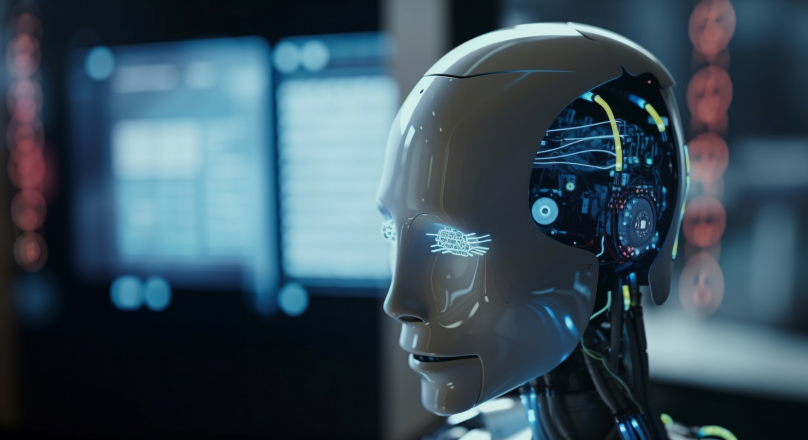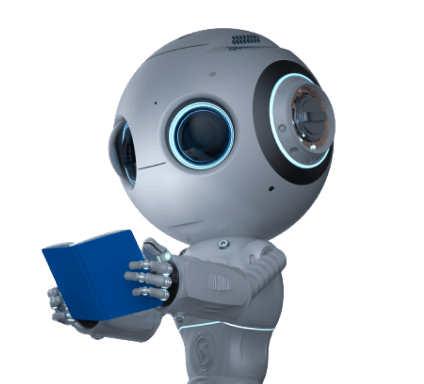Results for ""
Through this article, I have tried to explore the latest developments in generative AI and their practical implications across various domains. We delve into advanced techniques such as Diffusion Models, Denoising Score Matching, Non-autoregressive Transformers, and Flow-Based Models, shedding light on their potential to address real-world challenges. Furthermore, we discuss novel approaches for handling rare events, out-of-distribution inputs, and adversarial attacks, emphasizing the importance of robustness and reliability in generative models. Finally, we examine visionary goals such as achieving Artificial General Intelligence (AGI) through hierarchical reinforcement learning, meta-learning, and self-supervised learning. By presenting an overview of cutting-edge advancements and their implications, I inspire further research and innovation in the field of generative AI.
Latest Advances
Generative AI encompasses a wide range of techniques and models aimed at generating data that resembles real-world samples. In this section, we discuss some of the latest advancements in generative AI, including diffusion models, denoising score matching, and non-autoregressive transformers.
- Diffusion Models: Diffusion models represent a class of generative models that learn to generate high-quality samples by iteratively refining a noise distribution. Unlike traditional autoregressive models, diffusion models do not require explicit likelihood estimation, making them more efficient and scalable for high-dimensional data generation tasks. Notable examples include the Diffusion Probabilistic Models (DPMs), which demonstrated impressive performance in image generation and inpainting tasks.
- Denoising Score Matching: Denoising score matching is a technique for training generative models by minimizing the discrepancy between the model's score function and the score function of the data distribution. By leveraging denoising autoencoders and score matching objectives, denoising score matching algorithms can effectively capture the underlying data manifold and generate high-fidelity samples. Recent research has shown promising results in image generation and unsupervised representation learning using denoising score matching techniques.
- Non-Autoregressive Transformers: Standard autoregressive Transformers follow a left-to-right decomposition of the target sequence, leading to slow inference and hindered parallelism. Non-Autoregressive Transformers (NATs) eliminate the left-to-right constraint, proposing a sequence-to-sequence transformation strategy. By conditioning each token generation on the entire input sequence, non-autoregressive transformers can achieve faster inference times and improved scalability for sequence generation tasks such as machine translation and text generation. NATs consist of a bidirectional encoder and a masked decoder, where the latter predicts the entire target sequence independently.
- Flow-Based Models: Flow-based models emerged as another attractive option for generative modeling. They provide exact likelihood estimation and bijective mappings between data and a latent variable space, facilitating invertible density estimations and efficient sampling. Grathwohl et al. combined flow-based models with score-based generative models called FlowScore. FlowScore enjoys favorable asymptotic properties and scales better than pure score-based methods. Another notable example is iResNet, a residual flow-based model that achieved excellent performance in image generation.
- Optimal Transport Theory: Optimal transport theory brought forth novel perspectives in comparing probability distributions and measuring distances. It opened doors to Wasserstein-based generative models, which enjoy stronger theoretical guarantees and improved performance compared to classic GANs. Wu et al. showed that combining sliced Wasserstein distance with a dual update scheme leads to faster and more stable training.
Practical Implications of Generative AI
In addition to showcasing the latest advancements in generative AI, it is essential to consider their practical implications for real-world applications. In this section, we discuss the practical challenges and opportunities associated with deploying generative models in various domains.
- Handling Realistic Tasks: Rare Events, Out-Of-Distribution Inputs: Generative models are often tasked with generating data samples that capture the underlying distribution of the input data. However, real-world datasets may contain rare events or out-of-distribution inputs that pose challenges for generative models. Addressing these challenges requires robust training strategies and sophisticated techniques for modeling rare events and out-of-distribution inputs. Techniques are being developed to enable GenAI models to generate rare events or data points that fall outside the training distribution, enhancing their generalizability.
- Controlled Generation: RASAT, GeDi, CRFM: Controlled generation addresses the challenge of balancing controllability and expressivity. Recent models such as Relationship-Aware Self-Attention Transformer (RASAT), Generate, Edit, and Revise (GeDi), and Control-Codes for Retrieval-Augmented Sequence Generation (CRFM) illustrate ways to exert fine-grained control over generated samples. RASAT infuses factual knowledge into pre-trained language models, whereas GeDi controls the generation process by introducing guidance signals. On the other hand, CRFM integrates retrieval-augmented generation with discrete latents to achieve controllable text generation.
- Robustness Against Adversaries: RAGE, ADVERSARIAL_LOGISTIC_REGRESSION, ROAR: Robustness against adversaries remains a critical concern in deploying generative models, where small perturbations to input data can lead to significant changes in the generated samples. Ensuring robustness against adversarial attacks is crucial for deploying generative models in security-sensitive applications such as image recognition and natural language processing. Recent works such as Risk-Averse Generative Adversarial Nets (RAGE), Adversarial Logistic Regression (ADVERSARIAL_LOGISTIC_REGRESSION), and RemOve And Retrain (ROAR) intend to defend against poisoning and evasion attacks. RAGE trains GANs under risk constraints to minimize exposure to adversarial examples. ADVERSARIAL_LOGISTIC_REGRESSION develops a theoretically grounded approach to defending against adversarial attacks. Lastly, ROAR retrains victim models after removing suspected adversarial examples to regain robustness.
Visionary Goals: Towards Artificial General Intelligence (AGI)
Beyond addressing practical challenges, generative AI holds the promise of achieving Artificial General Intelligence (AGI) – machines capable of performing any intellectual task that a human can do. In this section, we discuss some visionary goals in generative AI and their implications for advancing the field.
- Hierarchical Reinforcement Learning (HRL) : Hierarchical Reinforcement Learning (HRL) attempts to decompose complex decision-making problems into simpler subtasks, facilitating efficient learning and solving complex tasks. By decomposing tasks into sub-goals and learning hierarchical policies, HRL can facilitate the development of more scalable and adaptable generative models. Recent research has explored HRL-based approaches for training generative models with improved sample efficiency and generalization capabilities. HIERARCHICAL OPTimal INitiALizaTION (HIERO), which leverages options to learn temporally abstract macro-actions, leading to faster learning and better generalization. Similarly, DiCE, a method that discovers diverse and composable skills through mutual information maximization.
- Meta-Learning & Multi-Task Learning: Meta-learning and multi-task learning are techniques for training generative models to learn from multiple tasks or datasets simultaneously. Meta-learning and multi-task learning seek to enable models to grasp new concepts quickly, generalize across diverse tasks, and develop a deeper understanding of underlying structures. Recent advancements in meta-learning and multi-task learning have shown promising results in improving the sample efficiency and generalization capabilities of generative models across various domains. Finn et al. presented Model Agnostic Meta-Learning (MAML), a universal second-order optimization technique that adapts to new tasks with fewer updates. Santoro et al. introduced Meta-Learning Shared Hierarchies (MSH), which dynamically creates shared hierarchies in the function space to solve multiple tasks.
- World Models & Self-Supervised Learning: World models constructed on self-supervised learning represent a significant step towards AGI. World models and self-supervised learning are approaches for training generative models to learn representations of the environment and perform tasks without explicit supervision. By learning predictive models of the environment and using them for planning and decision-making, generative models can achieve greater autonomy and adaptability in real-world settings. Recent research has explored world models and self-supervised learning techniques for training generative models with improved sample efficiency and generalization capabilities. Ha et al. introduced World Models, a combination of VAEs and recurrent neural networks that learn latent representations of the environment. Based on these representations, an agent learns to act using model-free RL algorithms, demonstrating successful transfer to physical systems. Fu et al. proposed Dreamer, a method that applies imagination-based planning in latent space, leading to impressive results in continuous control tasks.
In conclusion, generative AI is at the forefront of innovation, with cutting-edge developments pushing the boundaries of what is possible in machine learning and artificial intelligence. By leveraging techniques such as diffusion models, denoising score matching, and non-autoregressive transformers, researchers are advancing the state-of-the-art in generative modeling and unlocking new opportunities for practical applications. Moreover, by addressing challenges such as rare events, adversarial robustness, and the pursuit of Artificial General Intelligence, generative AI is poised to revolutionize various industries and contribute to the advancement of AI as a whole. As we continue to explore new frontiers and practical implications in generative AI, we expect further breakthroughs that unlock new possibilities for innovation and discovery and fundamentally alter the relationship between humans and machines.






